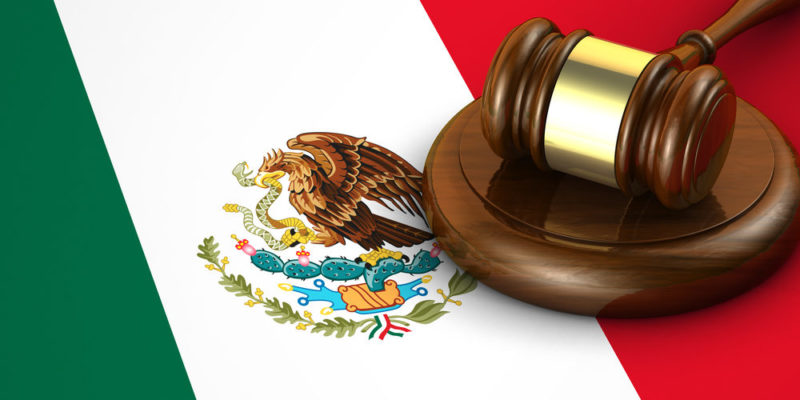We explain what the Mexican Constitution of 1917 is, what its structure and sections are like. In addition, its characteristics and criticisms.
What is the Political Constitution of the United Mexican States?
Also known as the Mexican Constitution of 1917, the Political Constitution of the United Mexican States is the Magna Carta or fundamental norm that politically, legally and juridically organizes the Mexican nation today . Like any modern constitution, it governs the terms of the separation of public powers, defines the procedures for the election of authorities, includes the fundamental rights and duties of citizens and the entire regulatory framework that defines life in Mexico .
This constitution was promulgated at the beginning of the 20th century , after the end of the Porfirate and in a period of political instability that prompted the executive power to enact a Constituent Congress that began its functions in Santiago de Querétaro on December 1, 1916 and had deputies and constituents of all the states of the country, allowing a representation of the diverse political forces in conflict.
On February 5, 1917, it was definitively promulgated under the name of the Political Constitution of the United Mexican States.
-
Structure
Refoundation of the State
The State constituted by this Magna Carta is republican, representative, democratic and federal , governed by the classic tripartite of public powers: executive, wielded by the President of the Republic ; judicial , contemplated in the Supreme Court of Justice; and legislative , which resides in the National Congress, divided into two chambers: the Senate and the Chamber of Deputies.
-
National territory
- In 1931 the nation lost the sovereignty of Clipperton Island to France , for which it was no longer part of the federal map.
- In 2016, Mexico City won its right to its own constitution and became the 32nd federal state.
Changes compared to 1857
The 1917 Constitution ratified the system of direct election of its authorities, but it distinguished itself from the previous one by eliminating presidential reelection, suppressing the vice-presidency of the republic, and giving more autonomy to the judiciary and the federative entities.
He reinstated the Senate , eliminated in the previous Constitution, and created the Free Municipality, as well as an agrarian order regarding land ownership.
On the other hand, it enshrined freedom of worship , freedom of expression , freedom of association for workers, free secular education and an eight-hour workday.
-
Sections
 This Magna Carta is made up of nine titles, along its two parts (dogmatic and organic), which are the following:
This Magna Carta is made up of nine titles, along its two parts (dogmatic and organic), which are the following:
- Title first. It occupies the entire dogmatic section and is divided into four chapters:
- Chapter I. Of the human rights and individual guarantees (arts. 1 to 29).
- Chapter II. Of the Mexicans (arts. 30 to 32).
- Chapter III. Of foreigners (art. 33).
- Chapter IV. Of Mexican citizens (arts. 34 to 38).
- Second title. From the second we are already in the organic part of the Constitution. This title is divided into two chapters and contains 10 articles (from 39 to 48), referring to national sovereignty and the form of government , the national territory and the federation.
- Third title. It contains four chapters covering 58 articles (from 49 to 107). It deals with the division of powers and the particularities of each one.
- Fourth title. It contains seven articles (from 108 to 114) that deal with the responsibilities of public servants and the patrimonial of the State.
- Fifth title. It contains eight articles (from 115 to 122) that deal with the federation of states and the federal district.
- Sixth title. It contains a single article (123) that refers to work and social security.
- Title seventh. It contains eleven articles (from 124 to 134) to talk about general prevention.
- Eighth title. It contains an article (135) that deals with possible reforms to the Constitution itself.
- Title nine. It contains the remaining article (136), which postulates the inviolability of the Constitution itself.
-
Reforms
The Mexican Constitution, unlike that of other Latin American countries, has not been replaced by a new , more modern one, but has been gradually reformed as needs arose.
Inviolability

As in other nations, this Constitution postulates its own inviolability , that is, the permanence of its enshrined rights regardless of whether they are violated or not.
This means that, for example, freedom of expression can be violated in practice by some institution, thus generating a punishment for the person responsible, but as such the law does not disappear.
-
Importance
This text arose in a historical moment of great tensions between the Carrancista or "renovating" forces and the "radicals" of the time, allowing to overcome a tense historical conjuncture towards a model of coexistence.
On the other hand, the Constitution includes many of the contributions of the Mexican Revolution that it would have been tragic to consider lost.
It can serve you: History of Mexico .
Criticisms of the 1917 Constitution

This constitutional text has often been accused of having copied or translated fragments of various constitutions such as the Spanish or American of the time, which would have led to the promulgation of a very modern legal text, for a nation that was not yet modern. .
This could play against the well-being of numerous indigenous ethnic groups whose model of life is very different from that promulgated by the constitutional body of the nation.
-
Social rights
The above content published at Collaborative Research Group is for informational and educational purposes only and has been developed by referring reliable sources and recommendations from technology experts. We do not have any contact with official entities nor do we intend to replace the information that they emit.
Abubakr Conner brings a diverse skill set to our team, and covers everything from analysis to the culture of food and drink. He Believes: "Education is the most powerful weapon that exists to change the world." .
Leave a reply
Your email address will not be published. Required fields are marked *Recent post

Sport: What Is It, Types, Risks, Features, Characteristics and Examples

Dogs: Emergence, Features, Characteristics, Feeding and Breeds

Story: Definition, Elements, Structure, Features and Characteristics

